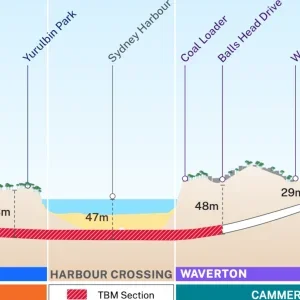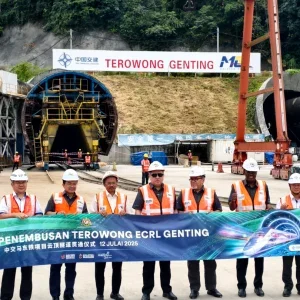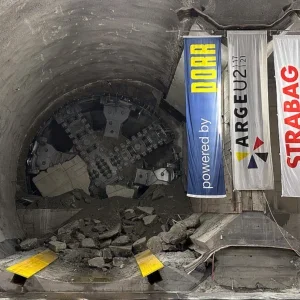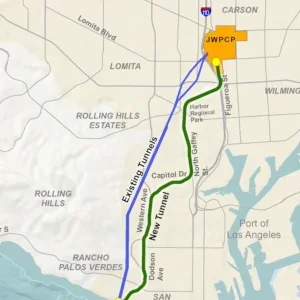Excavation began in early 2012 on the mainland and island shafts. Once the shafts were dug, two purpose-built, Canadian-made TBMs dubbed ‘Chip’ and ‘Dale’ were launched to bore the seven interlocking "tunnel drifts," forming the unique arched crown design of the main tunnel. Three of the tunnel drifts were built to include new City Of Toronto sanitary and water mains. Excavation of the tunnel was completed in October 2013, and waterproofing and reinforcing steel layers were installed.
"Just six months ago, we were in the process of carving through rock. Today, with the concrete ceiling, walls and flooring complete, the tunnel is quickly transforming into what will be a first-class piece of infrastructure Torontonians can be proud of," said Geoffrey Wilson, TPA president and CEO. "The pedestrian walkway is about making the Billy Bishop Toronto City Airport traveller experience even better and will allow people to get to and from the airport when they want and how they want. It is also an important component of our traffic management strategy as it evens out the flow of passengers and alleviates the congestion stemming from travellers arriving and departing in waves according to the ferry schedule."
The concrete liner encases the 550ft (167.6m) horizontal tunnel expanse that runs under the Western Gap connecting the mainland to the airport. The concrete was poured in 16 sections by a 110 tonne, 12m, arch-shaped hydraulic machine that forms an artificial surface onto which the concrete is pumped to create the ceiling and walls. On average, each section takes two days to complete leaving a solid concrete liner over the rock. Approximately 2,000 cubic metres of concrete was poured to create the liner.
When it opens, the pedestrian tunnel will have four moving sidewalks travelling at 2.3km per hour. From a bank of six elevators on the mainland side, travellers will go 100ft (30.5m) down to access the tunnel and travel along the passageway to escalators which take travellers to the airport’s check-in area. The complete journey will take less than six minutes, and will dramatically improve passenger flows.
Next phases of the tunnel project will include construction of the connecting terminal structures, installation of the moving walkways, escalators and elevators and landscaping, as well as electrical, mechanical and final finishing work.
The tunnel project will not be paid by taxpayers but is rather financed through an innovative public-private partnership agreement between the TPA, Forum Infrastructure Partners and lead contractor PCL. A portion of the existing Airport Improvement Fee paid by departing passengers will also go towards the tunnel’s construction. Once in operation, the tunnel will use 100 per cent green energy supplied by Bullfrog Power Inc.







